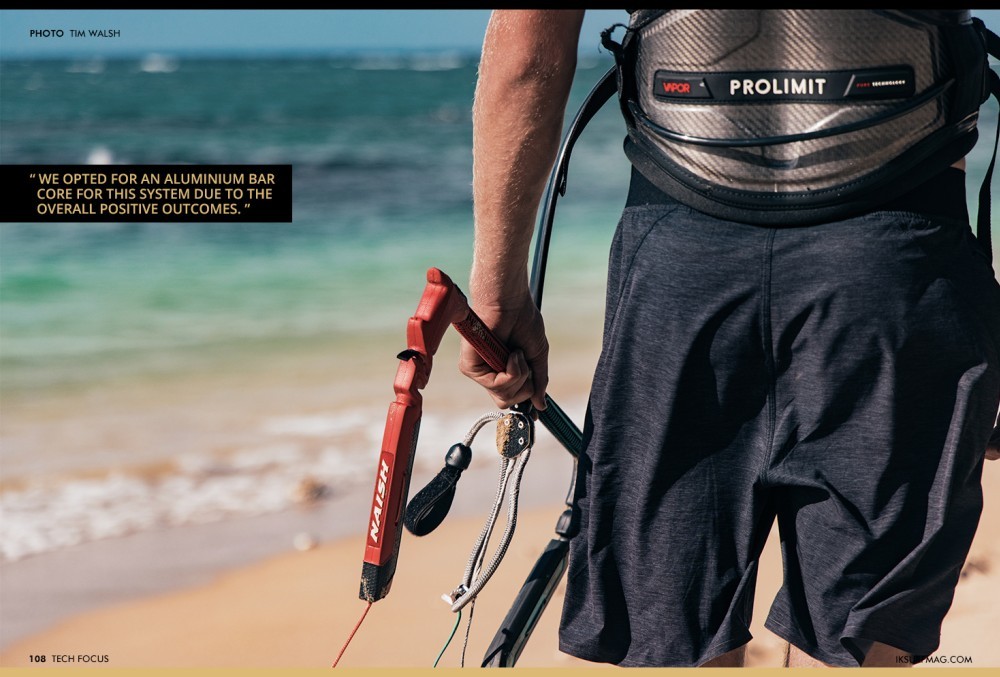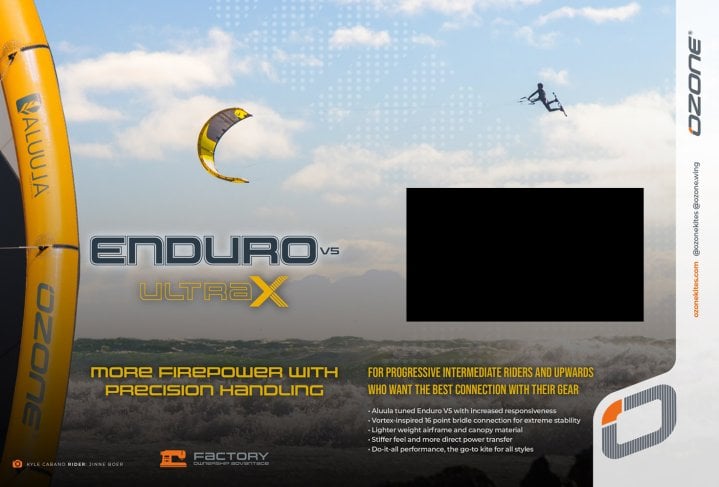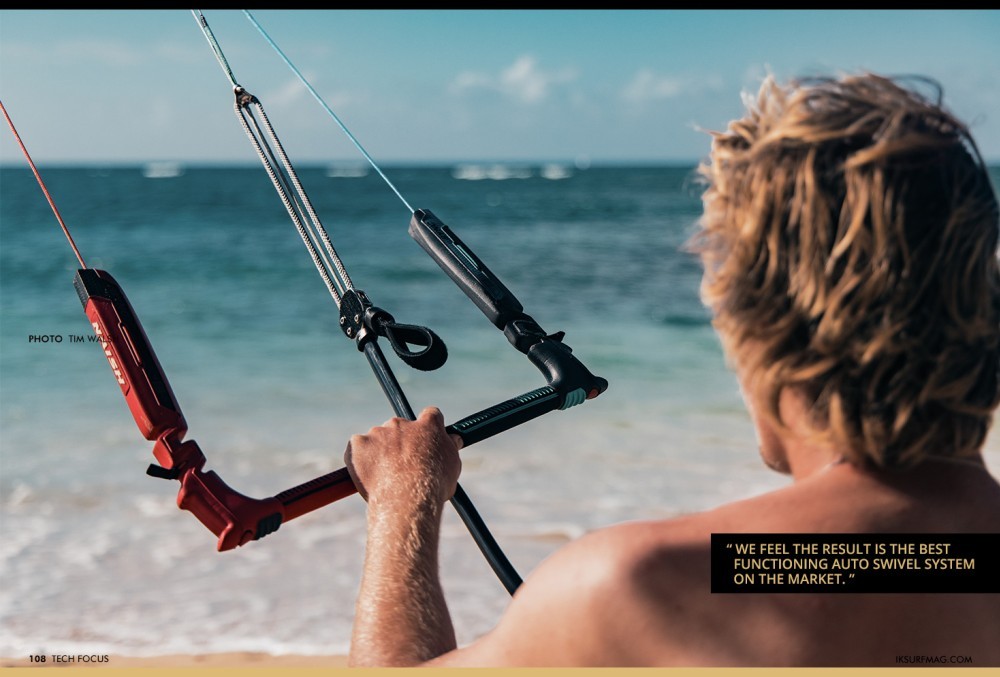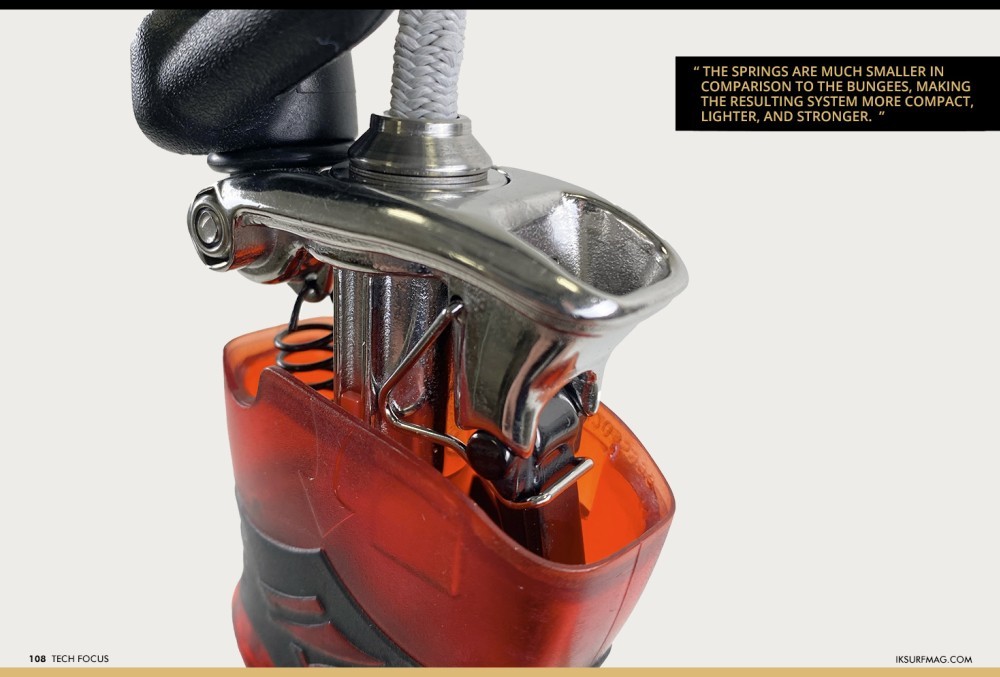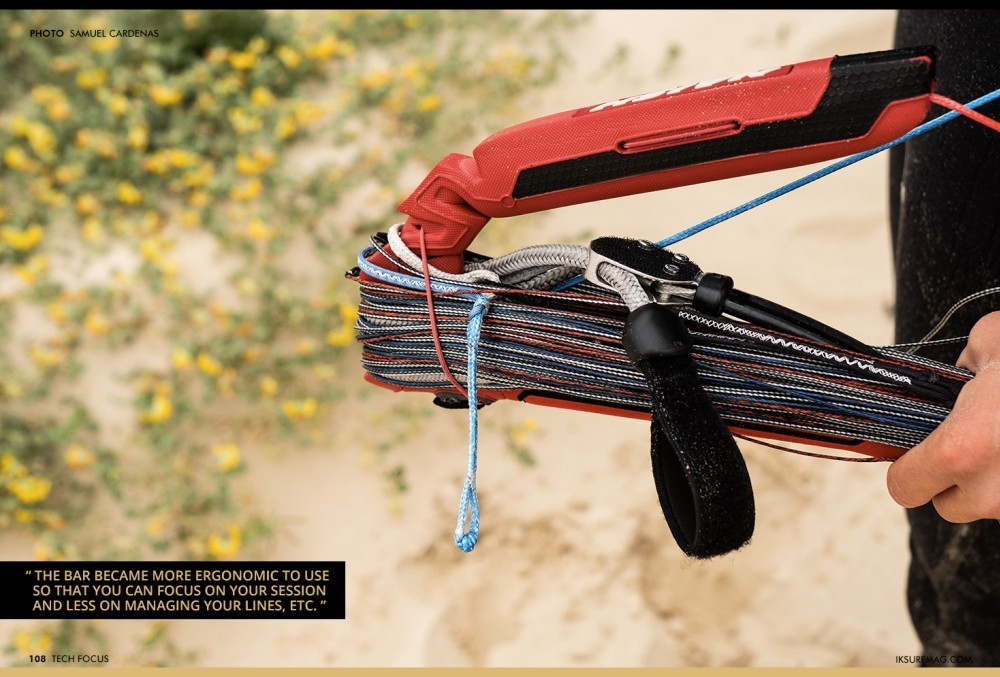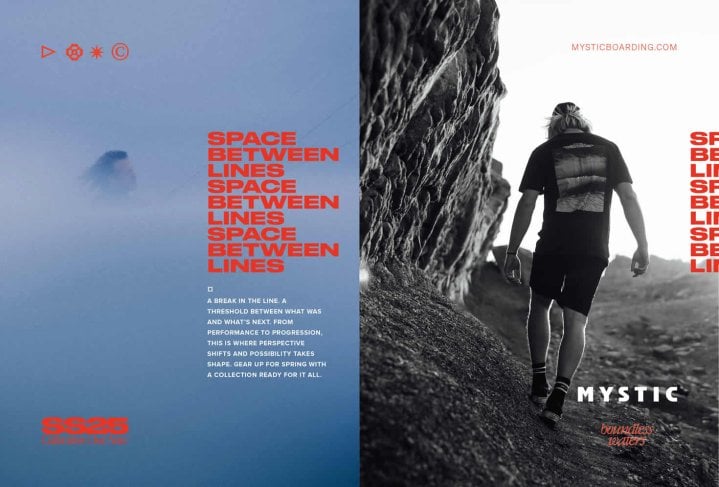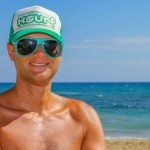
Tech Focus: Naish Sync Bar
Issue 108 / Tue 17th Dec, 2024
Rou Chater and Noah Hoffman discuss Naish’s Sync Bar, which features innovations for safety, performance, and durability, including a patented Anti-Lock Bearing System and a fully metal “One Click” release mechanism for unmatched longevity. Ready to enhance your kite experience? Dive in!
Hi Noah, it’s great to have you here, and we can’t wait to hear more about the Sync Bar. The kite bar is the most complicated piece of equipment that we use. How long has the team been working on developing the Sync Bar, and was it always a project to have an entirely new bar rather than adding some of the features to the Torque bar as they were developed?
The new Sync bar is an entirely new development. We started with a clean sheet around three years ago, allowing us to individually target every detail we wanted to improve, no matter how big or small. By starting from scratch and developing all new moulds, we came up with industry-leading innovations. We built every piece of the system with the same focus to make a safer and stronger system, keeping everything that you need and nothing you don’t.
It is also the most vital piece of safety equipment. Itse, as it is highly complicated, has hundreds of parts and components that have to work in harmony. How long and vigorous was the testing process, and what certifications does the bar have?
You are 100% right; the bar is your kiteboarding kit’s most important safety element. Throughout the entire development of the Sync Control system, one of the main criteria was to be compliant with the ISO 21853 Standard. For those who don’t know the ISO standard, it sets a standard for the force required to activate your release in various loads and conditions. In addition to countless hours of lab testing, we also had many rounds of samples tested all around the globe, which allowed us to find and resolve issues that would not have been discovered any other way. You would be surprised what people can do to a bar, especially in schools! Regardless of building to the specifications, all the testing that went into this bar makes us confident in our system.
The bar is constructed using aluminium; what advantages does this offer over carbon?
We opted for aluminium over carbon because of its material properties. Although good carbon tubes can be just as strong and lighter than aluminium, they suffer from being brittle. When carbon has a fracture in its weave, it can fail very abruptly, which is something you wouldn’t catch on the bar tubes when they are covered with EVA. Meanwhile, aluminium will show some deformation before you find yourself kiting with a 2-piece bar! So, while there was a marginal weight gain, we opted for an aluminium bar core for this system due to the overall positive outcomes.
You have a patent on the “Auto Swivel” system. How does it work, and how does it differ from other systems?
This is one of the features we are most excited about regarding the Sync System. For auto-swivel systems to work, the power lines must be constrained to a specific orientation, keeping the front lines from twisting. On most auto swivels in the market, this makes it very difficult to fully steer and depower at the same time due to the block system that keeps everything straight. That’s where our Anti-Lock Bearing comes in; it decouples the steering inputs and the depower throw. Making it so that it will always allow you to depower and control your kite at the same time. The centre piece that the bar runs through allows the bar to turn while keeping the centre vertically articulated. This feature, combined with our 3-chambered PU sleeve, makes space for 2 powerlines to run through and symmetrically distributes the load to the bearing at the bottom of the QR, allowing the Auto swivel to work effortlessly.
The Anti-Lock Bearing System is a new innovation. What is its purpose, and how did you come up with the idea and bring it to market?
As I mentioned before, the Anti-Lock Bearing System is our patented auto-swivel system that decouples the kite’s depower and steering inputs. We originally came up with this idea because of our team riders, who liked the convenience of the auto swivels but not at the expense of performance. They wanted to avoid the issue that plagues auto swivels where the depower gets stuck during kite loops, and you have to release the steering to depower the kite. During the testing, we went through a bunch of different iterations to figure out the best approach, and we feel the result is the best functioning auto swivel system on the market.
The “One Click” release system uses only metal components rather than bungee, which must add to the complexity of the design and make it more expensive. What was the thought process behind this, and how does it benefit the rider?
Before I answer this one, I always like to have people do a thought experiment. If you are in a car or on a plane, do you trust your safety belt to hold you safely in place? Everyone will say, “Yes, of course!” Now, if your 20+ year old car had safety belts that release operated with a hair elastic, would you have the same confidence?
That is why our Sync safety release does not operate with hair elastics like all the other kite safety mechanisms. Although those systems function as new, we wanted to focus on the longevity of our system. Because bungees break down with use over time, especially in salt and UV environments, metal springs were an option that helped us achieve everything we wanted to. The Sync QR has two metal springs: a coil spring responsible for the return of the collar and a constant force leaf tension spring, which aids in the reload function. As you expected, this design was very tedious; we tried many different styles of springs and different iterations of springs before we landed on the final design to ensure the operation would never fail. Both springs are designed to operate only in the material’s elastic range, meaning they won’t deform over time, always returning to the designed shape. An added bonus is that for the same designed force, the springs are much smaller in comparison to the bungees, making the resulting system more compact, lighter, and stronger.
The time cost in the design of the springs and system was high, but now that the design is finalised, the cost of the metal springs is only marginally higher. This is because a machine can create identical copies and a fast speed that doesn't need post-processing. Meanwhile, bungees must be cut to the correct length, placed in a jig, and crimped. So, for a very small increase in price, you get a piece that is safer and lasts a lot longer.
It’s available in two sizes, 50 and 55. Is it designed to work only with the Naish product line, or can it be used on other kites, too?
The line set was designed with interchangeable pigtails so that it can be used with any brand of kite. Another interesting item is that the 50cm width is also a compact bar, meaning that the depower throw is 8.5cm shorter than the 55 length. This was to offer an option for anyone with shorter arms who previously struggled with reaching the trim cleat.
Why should a rider upgrade to the new Sync Bar?
Between all the innovations on this project, such as anti-lock centre bearing, auto swivel, New Braidtech SK99 hybrid line set, one click in quick release, the list goes on. With all these upgrades, the bar became more ergonomic to use so that you can focus on your session and less on managing your lines, etc. Also, the Sync control system is much lighter, making your connection to your kite much more direct, and it also saves some weight in your bag for your next kite adventure.
Thanks for taking the time to educate us on this great-looking and innovative release from Naish!
Thanks for the opportunity! Looking forward to seeing these systems on the water!
Videos
By Rou Chater
Rou has been kiting since the sports inception and has been working as an editor and tester for magazines since 2004. He started IKSURFMAG with his brother in 2006 and has tested hundreds of different kites and travelled all over the world to kitesurf. He's a walking encyclopedia of all things kite and is just as passionate about the sport today as he was when he first started!





